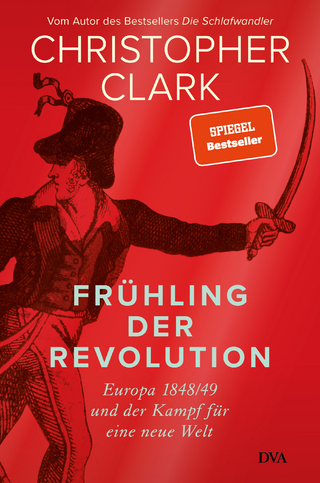
Russian in the 1740s
Academic Studies Press (Verlag)
978-1-64469-797-9 (ISBN)
During the 1740s, literate Russians mostly kept to traditional forms of written language. Although the linguistic reforms undertaken by Peter the Great earlier in the century affected printed secular texts and the imperial administration, these reforms were less radical than often assumed. This study draws conclusions based on an analysis that differs from earlier ones. First of all, the study examines the Russian language during a comparatively little-known decade of the eighteenth century. In doing so, it takes into account not only strictly linguistic data, but also developments in Russian society. Second, the investigation analyzes sources that are seldom valued for their linguistic content, thus offering a broader perspective on the Russian language of the period.
Thomas Rosén holds a PhD in Slavic linguistics from Uppsala University, Sweden. Most of his work has been in medieval and early modern historical linguistics. He is currently teaching Russian and Ukrainian at the University of Gothenburg. His pedagogical experience also includes Serbian, Croatian, Bosnian, Albanian, and Slavic historical linguistics.
Author’s Notes
Notes on Transliteration
Spelling of Names
The Old Style Calendar
Translation of Quotations
Acknowledgments
Chapter 1: Introduction
1.1 Aim and Purpose of the Investigation
1.2 Language and Society in Eighteenth-Century Russia
1.3 Historical Sociolinguistics?
1.4 Chronological Delimitations
1.5 Was Post-Petrine Russian in Disarray?
1.6. Research Questions
1.6.1 Extralinguistic Questions
1.6.2 Linguistic Questions:
1.7 Outline of the Investigation
Chapter 2: Survey of Existing Research
2.1 Russian Language from the 1740s as a Field of Study
2.2 General Studies of Eighteenth-Century Russian
2.3 Sociolinguistically Oriented Studies of Eighteenth-Century Russian
2.4 Language and Politics in the 1740s
2.5 Assessing the Situation
2.6 Conclusions
Chapter 3: The Impact of Society on Language
3.1 Introductory Remarks
3.1.1 Peoples and Languages
3.1.2 Social Stratification
3.1.3 Politics and Administration
3.2 Education and Literacy in Eighteenth-Century Russia
3.2.1 Education
3.2.2 Literacy
3.3 Language Management
3.3.1 Examining Language Management in Handwritten Documents from the 1740s
3.3.2 The Imperial Academy of Sciences, a Language Management Agency
3.3.3 A New Function: The Founding of the Russian Conference
3.3.4 The Demise of the Russian Conference
3.4 Language Management in the Administration
3.4.1 Template for the Imperial Title, 1741
3.4.2 Template for a Letter of Credit, 1744
3.5 Conclusions
Chapter 4: Available Sources
4.1 Electronic Corpora of Eighteenth-Century Texts
4.2 Printed Texts
4.2.1 Books
4.2.2 Newspapers
4.2.3 Popular Prints
4.3 Archival Material
4.3.1 Selection of Sources
4.4 Paleographic Characteristics of the Material
4.4.1 Developments in Printing during the 1740s
4.4.2 Handwritten Documents
4.5 The People behind the Material
Chapter 5: Methodological Considerations
5.1 Existing Methods
5.2 Methodological Renewal
5.2.1 The Uniformitarian Principle
5.2.2 The Uniformitarian Principle and the Registers of Eighteenth-Century Russian
5.2.3 What May Have Influenced the Registers?
5.2.4 Register Analysis
5.3 Register Analysis of Russian from the 1740s
Chapter 6: Situational Analysis of Registers
6.1 Participants
6.1.1 Individuals
6.1.2 Institutions
6.2 Relationships among Participants
6.3 Channel
6.3.1 Change of Printed Medium: A Weather Phenomenon in Spain
6.3.2 Speech to Writing: Witness Statements
6.4 Processing Circumstances
6.5 Setting
6.6 Communicative Purpose
6.7 Topics
6.8 Conclusions
Chapter 7: Linguistic Analysis
7.1 Autographs
7.1.1 Mate Filipp Lanikin’s Receipt
7.1.2 Mikhail Turchenikov’s Letter and Its Cultural Context
a) The Report
b) The Letters
7.2 The Language of Regional Administration
7.3 The Language of Diplomacy
7.3.1 The Treaty on Subsidies
7.3.2 Letters to the Royal Families
7.3.3 A Letter by A. I. Rumiantsev
7.4 The Life of Printed Texts
7.4.1 Printing and Obsolete Characters
7.4.2 The Development of Printed Texts
7.4.3 Parallel Editions: Field-Marshal de Lacy’s Reports from the Front
Chapter 8: Functional Analysis
8.1 Tradition
8.2 Education
8.3 Social Identity
8.4 Efficiency of Administration
8.5 Informativity
8.6 Conclusion
Chapter 9: General Conclusions
9.1 Territorial Expansion and the Need for Trained Specialists
9.2 Education and Literacy
9.3 Organized Language Management
9.4 Functional Spheres of Russian in the 1740s
9.5 Perspectives
Bibliography
Archival Sources
Archival Sources on the Internet
Printed Sources
Literature
| Erscheinungsdatum | 11.04.2022 |
|---|---|
| Zusatzinfo | Illustrations, unspecified |
| Verlagsort | Brighton |
| Sprache | englisch |
| Maße | 177 x 254 mm |
| Themenwelt | Schulbuch / Wörterbuch ► Wörterbuch / Fremdsprachen |
| Geschichte ► Allgemeine Geschichte ► Neuzeit (bis 1918) | |
| Geisteswissenschaften ► Geschichte ► Regional- / Ländergeschichte | |
| Geschichte ► Teilgebiete der Geschichte ► Kulturgeschichte | |
| ISBN-10 | 1-64469-797-1 / 1644697971 |
| ISBN-13 | 978-1-64469-797-9 / 9781644697979 |
| Zustand | Neuware |
| Haben Sie eine Frage zum Produkt? |
aus dem Bereich


